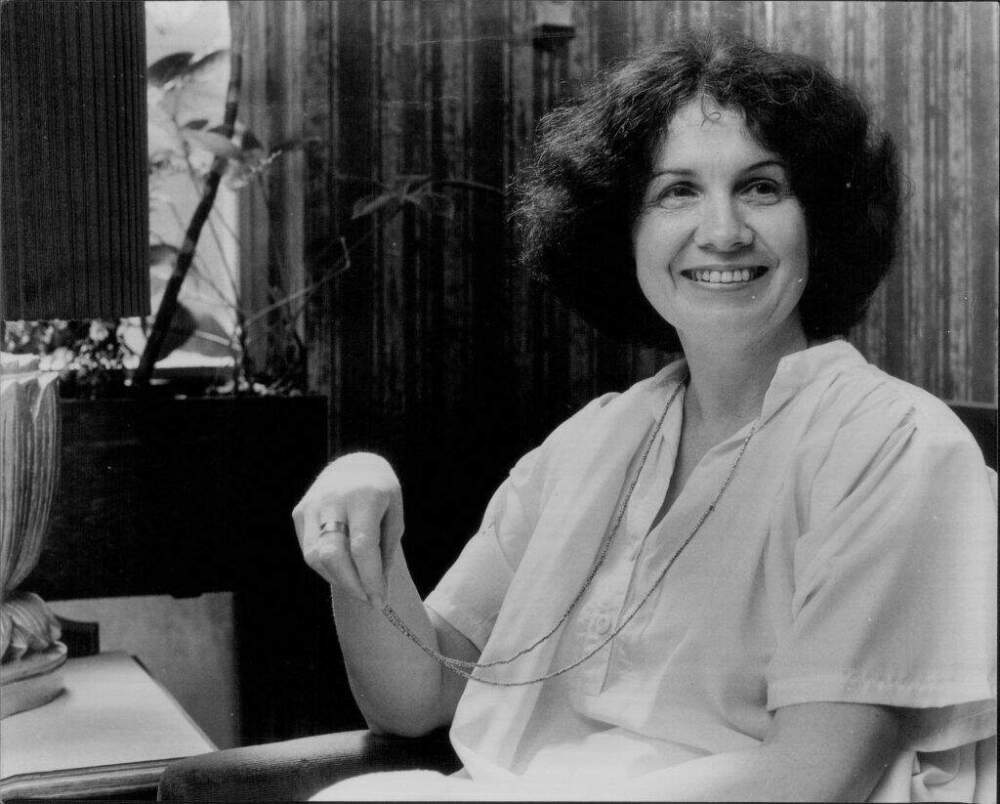Advertisement
Commentary
The fearless compassion of Alice Munro

Search for Port Hope in Google Maps and you’ll see a pin on the northern shore of Lake Huron, surrounded by dozens of other southwestern Ontario towns you’ve never heard of. Skim through the photos of Port Hope and you’ll see pictures of Hampton and Comfort and Best Western Inns, of a dam and a small river, a flat, plain but kempt Main Street. The streets are modest, quintessentially Canadian, checkered with unchanging and constantly reinvented storefronts, gracious Victorian homes and brutalist brick ranch houses. It’s fitting that this town was the long-time home of the recently deceased, Nobel Prize winning writer, Alice Munro.
Her compact, often linked tales of farmers and writers, housewives and divorcees, restless women and forlorn men encapsulated paradox in all its forms: the new straining against the old, the hunger for change in combat with the fear of it, of a present lived in memory while that memory shapes the future.
I first read Munro in 1975, at a point in my literary and actual life when I was in full rebellion against the protagonists and structure of much contemporary fiction. I was tired of reading about assassins and spies, seething and stifled Upper West Side women, and promiscuous but perpetually dissatisfied men – most of them affluent, all of them self-loathing or misanthropic. I didn’t subscribe to the classical narrative structure of inciting incident leading to quest leading to climax leading to denouement, and I was skeptical that most people ever had life-changing epiphanies.
If this is what writers have to write in order to be published, I told myself in a fit of clueless insecurity disguised as ennui, forget it. I’m not interested.

Then I read three books that opened my eyes and transformed my petulance into an appreciative awe that has stayed with me ever since. One was E.L. Doctorow’s “Ragtime,” another was Tillie Olsen’s “Tell me a Riddle,” and the third was Alice Munro’s “Dance of the Happy Shades,” her first published collection of stories. Doctorow’s novel was a miracle of braided narratives about mostly real characters in which he revealed the historical forces that shaped them. Tillie Olsen’s book was a profoundly moving collection in which she indelibly portrayed the overlooked working-class people whose inner lives were as complex as they were ignored.
And in Alice Munro, I found a writer who routinely, in story after story, accomplished both. In her collections, I discovered Doctorow’s technical virtuosity and Olsen’s insight into the lives of the invisible people who occupy life, if not popular fiction.
Like Chekhov, to whom her work is often compared, Munro’s characters lead unremarkable lives characterized by thwarted ambitions, unreciprocated love and a rich interiority that reveals more than asserts. But while the comparison to Chekhov is apt, it’s also unnecessary. Munro was singular. In her characters, even the most naïve reader could encounter themselves, their own secret judgments, fantasies and shames, as in this excerpt from the story “Walker Brothers Cowboy”:
She walks serenely like a lady shopping, like a lady shopping, past the housewives in loose beltless dresses torn under the arms. With me her creation, wretched curls and flaunting hair bow, scrubbed knees and white socks — all I do not want to be. I loathe even my name when she says it in public, in a voice so high, proud and ringing, deliberately different from the voice of any other mother on the street.
Munro was fearless in her willingness to dwell in the moments of hatred we feel in relationships with those we love (or merely need) most — daughters and mothers (and sometimes fathers), childhood friends, and neighbors in a new suburban community, of whom she writes in “The Shining Houses”:
[It] did not matter much what they said as long as they were full of self-assertion and anger. That was their strength, proof of their adulthood, of themselves and their seriousness. The spirit of anger rose among them, bearing up their young voices, sweeping them together as on a flood of intoxication, and they admired each other in this new behavior as property-owners as people admire each other for being drunk.
Profanity was rare in Munro’s work, but not the rage that gives rise to it. The narrator of “The Progress of Love,” upon realizing that her religiously devout mother is not going to support her desire to go to high school, says:
You would think my mother might have a different idea, since she had been a school teacher herself. But she said God didn’t care. God isn’t interested in what kind of job or what kind of education anybody has, she told me. He doesn’t care two hoots about that, and it’s what He cares about that matters. This was the first time I understood how God could become a real opponent, not just some kind of nuisance or large decoration.
And yet her work is suffused with understated compassion, as when she says of two nearly impoverished children sitting in the back seat of their father’s car as they drive through a bleak, Depression-era landscape, “We play I Spy, but it is hard to find many colours.” That simple sentence broke my reader’s heart. And as a writer, I would slay to be able to say so much with so few words.
Munro was known for her ceaseless desire to edit and revise her own work. But that perfectionism — no, that truth-seeking — in no way made her stories feel overworked. There is nothing authorially imposed on her characters. Their stories are organic, unfolding from the inside out, as associative and non-chronological as consciousness itself. As she explained in a New York Times interview, “I want to tell a story, in the old-fashioned way — what happens to somebody — but I want that ‘what happens’ to be delivered with quite a bit of interruption, turnarounds and strangeness. I want the reader to feel something that is astonishing — not the ‘what happens’ but the way everything happens.”
Like many of her protagonists, Munro spent most of her life in rural southwestern Ontario, raising her children, and never seeking the limelight. But there was nothing small in her life or in her vision. As she so gloriously wrote in “Lives of Girls and Women”:
“People’s lives, in Jubilee as elsewhere, were dull, simple, amazing, unfathomable — deep caves paved with kitchen linoleum. It did not occur to me then that one day I would be so greedy for Jubilee … What I wanted was every last thing, every layer of speech and thought, stroke of light on bark or walls, every smell, pothole, pain, crack, delusion, held still and held together — radiant, everlasting.”
